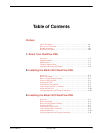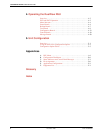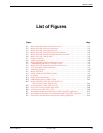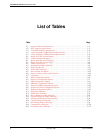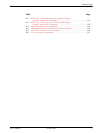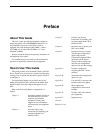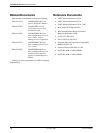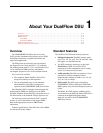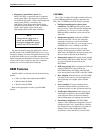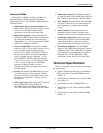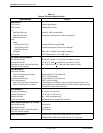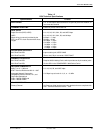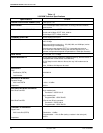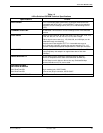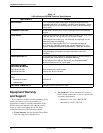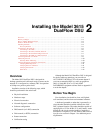
COMSPHERE DualFlow Data Service Units
1-2 December 1996 3615-A2-GB20-20
• Diagnostic Control Panel control. The
Model 3615 DSU is controlled from its diagnostic
control panel (DCP). The diagnostic control panel
for the Model 3616 DSU, called a shared diagnostic
control panel (SDCP), is installed in the
3000 Series Carrier
. Both control panels display
information about the DSU on 2-line, 16-character
liquid crystal display (LCD) and through
light-emitting diode (LED) status indicators.
NOTE
Except where a distinction is
made, the term
DCP
refers to
both types of diagnostic control
panels, the
DCP
or the
SDCP
.
For more information about the 3000 Series Carrier or
the SDCP
, refer to the
COMSPHERE 3000 Series Carrier
,
Installation Manual. For more information about the 6700
or 6800 Series NMS, refer to your NMS documentation.
These documents are identified in the
Related Documents
section of the
Preface
, which also provides a telephone
number you can call to order these documents.
DBM Features
DualFlow DSUs are ordered with one of the following
features:
• V
.32bis 14.4 kbps dial backup module (DBM)
• 2-W
ire Switched 56 DBM
• 4-W
ire Switched 56 DBM
Refer to the appropriate section for specific DBM
features.
V.32 DBMs
The
V
.32bis 14.4 kbps dial backup module (referred to
as V.32 DBM throughout this guide) is attached to the
DSU. The V.32 DBM provides the following features:
• Multispeed nondisruptive point-to-point
connections. The DBM provides point-to-point
service over the 2-wire dial network. Backup rates
available are 2.4, 4.8, 9.6, 12.0, and 14.4 kbps.
DBM and DDS connections can be active at the
same time.
• Independent operation.
Although the DBM is
installed on the DSU, the two are configured
separately and most tests can be run on either
independent of the other (e.g., you can run a test on
the DBM while a test is running on the DSU).
• Security. There are four levels of call setup
security:
None, Password, Callback, and Alarm.
W
ith Alarm, the DBM only answers incoming calls
when an alarm is detected on the DDS line.
• Management control.
Dial backup can be initiated
from a 6700 or 6800 Series NMS, the DSU’
s DCP
,
or it can be initiated automatically by the
DSU-DBM.
•
DTR contr
ol setup. When configured for DTR call
control (DTRCallCon: Orig) backup, the
DSU-DBM initiates dial backup when the DTE
raises data terminal ready (DTR) to the DSU-DBM.
• Rate Adaption.
W
ith this feature, the DSU-DBM
can adapt its data rate to a low-speed application
while operating over a higher speed switched
circuit.
• Port Async/Sync. The port asynchronous-to-
synchronous feature makes it possible to send
asynchronous data over the synchronous network.
• Nondisruptive Diagnostics.
When set up to use
nondisruptive diagnostics, the local DSU-DBM
sends diagnostic data over the dial connection
without interrupting or disrupting customer data.
• Full tributary diagnostics. The DSU-DBM
supports a full complement of diagnostic tests and
commands when a call is established on a backup
line. Diagnostics can be addressed to and sent to a
tributary from a 6700 or 6800 Series NMS
workstation, or from the DCP of a control DSU.



